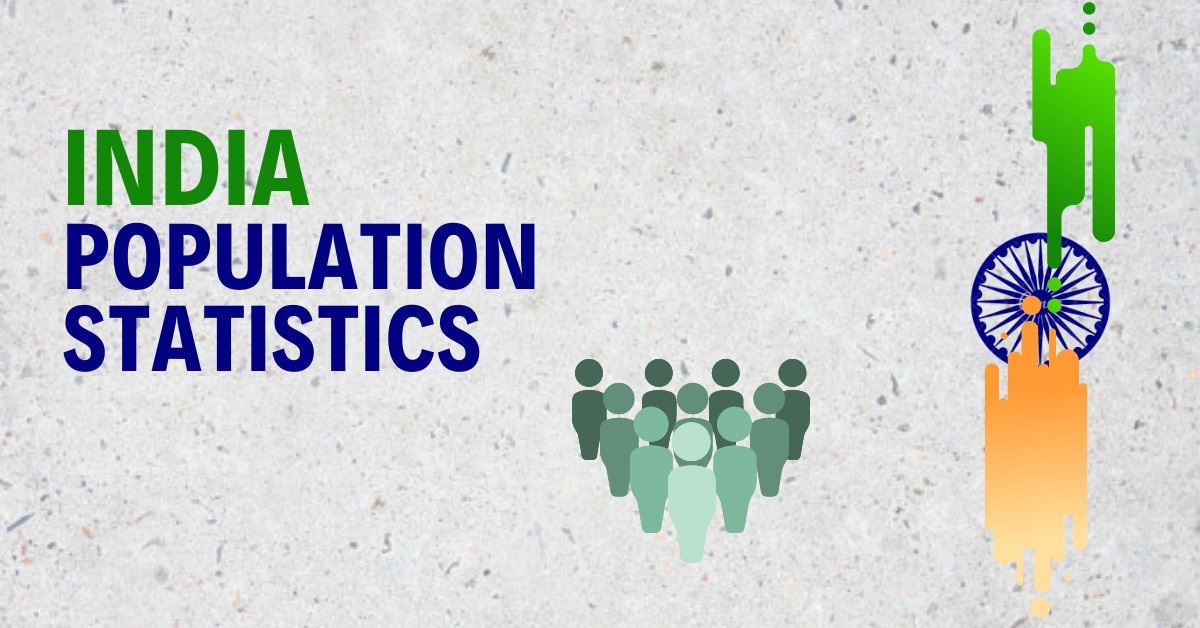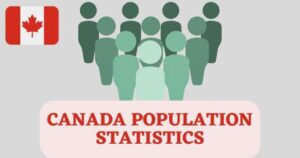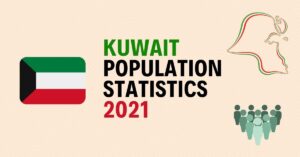India, the country that holds the greater part of South Asia and is one of the oldest civilizations in the world with a rich cultural heritage. It represents a highly diverse population consisting of many ethnic groups and several languages. One-fifth of the world’s total population is from India, and that makes it the second most populous country, only next to China.
Today, India is one of the most populous countries in the world, with a total population of 1.4 billion people. Since 1901, when its population was just under 190 million, it has grown almost tenfold to overtake China as well as more than double its own size.
According to the data provided in the UNFPA’s State of World Population Report 2024, Population of India in 2024 is estimated to be 1,428,000,000 with a growth rate of 1.2%.
The population of India doubled to 1.2 billion between 1975 and 2010 and reaching the billion mark in 1998. India is set to become the world’s most populous country by 2023 surpassing China. In 2030, the population is estimated to be 1.5 billion and set to reach 1.668 billion by 2050.
The population of India is also characterized by a high level of diversity. The country is home to people of different religions, including Hinduism, Islam, Christianity, Sikhism, Buddhism, and Jainism. The official language of India is Hindi, but there are many other languages spoken in different parts of the country. Some of the other major languages include Bengali, Telugu, Marathi, Tamil, and Urdu.
Despite the diversity of its population, India has been facing a number of challenges related to population growth. These challenges include overcrowding, inadequate healthcare, and environmental degradation. The government of India has taken several measures to address these challenges, including initiatives to promote family planning, improve healthcare, and reduce poverty.
Population Growth in India
Population growth has been a major concern for India, as the country is home to one of the largest and fastest-growing populations in the world. India’s population has been increasing at a rate of around 1.2% per year, and it is estimated that the country will surpass China in mid 2023.
The population of India is one of the largest and most diverse in the world. While population growth has presented a number of challenges, the government and people of India are working hard to address these issues and build a brighter future for the country. With continued efforts to promote sustainable development, India has the potential to become a global leader in the years ahead.
There are several factors driving population growth in India. One of the key factors is the high fertility rate, which stands at 2.0 children per woman in 2024. This is higher than the global average of 1.9 children per woman. However, the fertility rate in India has been declining over the years, partly due to increased access to education and healthcare for women.
Another factor driving population growth in India is the high life expectancy, which stands at 71 years for men and 74 years for women in 2024. This is due to a combination of factors, including improved healthcare, better sanitation, and a reduction in poverty. As a result, the population of India is getting older, with a growing proportion of the population over the age of 60.
India Population Statistics 2024
There were many figures from different source for the current population of India in 2023. The data was researched from a host of different institutions, who had used their own methodologies to arrive at their figures.
Current Population of India
The present population of India figures are listed from different sources in the following table.
| Sources | Current Population | Year |
|---|---|---|
| United Nations | 1,428,000,000 (1.42b) | 2024 |
| Countrymeters.info | 1,431,159,155 (1.43b) | 2024 |
| Worldometers.info | 1,418,823,875 (1.41b) | 2024 |
| Statista.com | 1,419,660,000 (1.41b) | 2024 |
| Worldpopulationreview.com | 1,425,627,557 (1.42b) | 2024 |
| Populationpyramid.net | 1,428,627,663 (1.42b) | 2024 |
Population Growth of India per decade
India is currently home to 1.42 billion people, and that number is expected to rise to 1,518,187,674 by the end of 2025. Because of fertility trends and changes in life expectancy, growth of India’s population is projected to decelerate slightly over that period, but not enough to make a big dent in its lead as home to more people than any other country on Earth. China and Nigeria are close behind India in population size, with each home to around 1.3 billion people in 2017; both countries are expected to have close to 1.4 billion by 2023.
| Census year | Population | Change (%) |
|---|---|---|
| 1951 | 36,10,88,000 | – |
| 1961 | 43,92,35,000 | 21.6 |
| 1971 | 54,81,60,000 | 24.8 |
| 1981 | 68,33,29,000 | 24.7 |
| 1991 | 84,63,87,888 | 23.9 |
| 2001 | 1,02,87,37,436 | 21.5 |
| 2011 | 1,21,07,26,932 | 17.7 |
| 2024 Est. | 1,428,000,000 | 15.1 |
As of 2011, the Census of India has been conducted 15 times. It is undertaken every 10 years. The 16th Indian Census will be held this year in 2023. After that, we will get to know the exact and official population figure declared by the Indian government.
In 2011, the official population is 1,21,07,26,932 with 17.7% growth rate. The estimated population in the year 2024 is 1,428,000,000 with a growth of 15.1%. The growth rate seems to show a decreasing trend in the past few decades. The reason for the decline is due to rising education levels, reduction of poverty and growing urbanization.
Male and Female Population in India 2024
| Male | Female |
|---|---|
| 51.95% | 48.05% |
| 730 million | 675 million |
In 2024, males make up 51.95% of the population at 730 million, while the number of females accounts for 48.05% of the total population at 675 million. That makes the gender split at 52% male – 48% female.
Age-wise Population of India in 2024
| Age Group | Population | Percentage |
|---|---|---|
| 0-14 years | 356,733,454 | 25.36% |
| 15-24 years | 250,203,116 | 17.78% |
| 25-34 years | 232,900,683 | 16.55% |
| 35-44 years | 201,729,266 | 14.34% |
| 45-54 years | 154,403,711 | 10.97% |
| 55-64 years | 112,571,062 | 8.00% |
| 65 years and over | 98,090,489 | 6.97% |
Around 74% of the population in India is below the age of 44. The majority of the Indian population falls in the age group of 0 to 24 years. This accounts for a staggering 607 million. No other country may have younger men and women. This is followed by the 25-44 age group, which numbers 434 million. A large part of this can be attributed to the population of younger men and women who fall in this age category.
History about the Indian population
Total Population of India from 1980 according to United Nations Data
| YEAR | INDIAN POPULATION (in million) |
|---|---|
| 1980 | 696.83 |
| 1981 | 712.87 |
| 1982 | 729.17 |
| 1983 | 745.83 |
| 1984 | 762.90 |
| 1985 | 780.24 |
| 1986 | 797.88 |
| 1987 | 815.72 |
| 1988 | 833.73 |
| 1989 | 852.01 |
| 1990 | 870.45 |
| 1991 | 888.94 |
| 1992 | 907.57 |
| 1993 | 926.35 |
| 1994 | 945.26 |
| 1995 | 964.28 |
| 1996 | 983.28 |
| 1997 | 1,002.34 |
| 1998 | 1,021.43 |
| 1999 | 1,040.50 |
| 2000 | 1,059.63 |
| 2001 | 1,078.97 |
| 2002 | 1,098.31 |
| 2003 | 1,117.42 |
| 2004 | 1,136.26 |
| 2005 | 1,154.64 |
| 2006 | 1,172.37 |
| 2007 | 1,189.69 |
| 2008 | 1,206.73 |
| 2009 | 1,223.64 |
| 2010 | 1,240.61 |
| 2011 | 1,257.62 |
| 2012 | 1,274.49 |
| 2013 | 1,291.13 |
| 2014 | 1,307.25 |
| 2015 | 1,322.87 |
| 2016 | 1,338.64 |
| 2017 | 1,354.20 |
| 2018 | 1,369.00 |
| 2019 | 1,383.11 |
| 2020 | 1,396.39 |
| 2021 | 1,407.56 |
| 2022 | 1,417.17 |
| 2024 | 1,428.00 |
Overpopulation in India
Overpopulation can be defined as a condition where an area’s population density exceeds its carrying capacity. When humans exceed their natural limits, they create problems for themselves and for other species. For example, when you have too many people using up limited resources like water or arable land, then shortages occur which cause conflict over these resources. Overpopulation also creates additional challenges when dealing with pollution and waste management because you have more individuals creating waste products that need to be dealt with safely or disposed of properly. Another consequence of overpopulation is habitat destruction – human populations tend to expand into areas already inhabited by animals who lose their homes and food sources due to our presence.
Ever since India gained independence from British rule in 1947, its population has ballooned. From 321 million people just before independence to 1.428 billion today, making it one of only two countries in all of Asia with a population of more than 1 billion (the other being China). The causes are straightforward: fertility rates remain high, and its population continues to grow exponentially; other factors include greater female literacy and life expectancy, higher standards of living and increased urbanization.
Causes of Overpopulation in India
India is home to one of the world’s largest and fastest-growing populations, with an estimated 1.428 billion people as of 2023. The causes of overpopulation in India are complex and multifaceted, involving a range of social, economic, and environmental factors.
Main Causes of Overpopulation in India
Here are the main causes of overpopulation in India, presented in points.
- High fertility rates
- Lack of education, particularly for women
- Poverty
- Rapid urbanization
- Migration from rural areas to cities
- Religious beliefs
- Lack of access to healthcare services
- High Fertility Rates
One of the main drivers of overpopulation in India is high fertility rates. The fertility rate in India is currently 2.0 children per woman, which is higher than the global average of 1.9 children per woman. This is partly due to cultural and social factors that encourage large families, as well as a lack of access to contraception and family planning services.
- Lack of Education
Another factor contributing to overpopulation in India is a lack of education, particularly for women. Studies have shown that women who are educated are more likely to delay marriage and childbirth, and have fewer children overall.
- Poverty
Poverty is a major factor in overpopulation in India. Many families in India have large numbers of children as a means of ensuring that they will have someone to support them in old age, as well as to increase their chances of having a child who will survive to adulthood. Poverty also makes it difficult for families to access family planning services and to provide for their children’s basic needs.
- Urbanization
India has undergone rapid urbanization in recent decades, with millions of people moving from rural areas to cities in search of better job opportunities and a higher standard of living. This has led to overcrowding in urban areas, with many people living in slums and informal settlements. As a result, there is a growing strain on infrastructure and public services, such as housing, sanitation, and healthcare.
- Migration
Internal migration is another factor contributing to overpopulation in India. People from rural areas migrate to cities in search of work and better opportunities, putting additional strain on urban areas. This has led to the development of sprawling slums on the outskirts of cities, which lack basic amenities and infrastructure.
- Religious Beliefs
Religious beliefs also play a role in the high fertility rates in India. Many people in India believe that having children is a way to fulfill their religious and cultural obligations.
- Lack of Access to Healthcare
A lack of access to healthcare is another factor contributing to overpopulation in India. Many women in rural areas do not have access to healthcare services, including family planning services. This can result in unplanned pregnancies and a higher number of children per family.
In conclusion, overpopulation in India is a complex issue that is driven by a range of social, economic, and environmental factors. Addressing the underlying causes of overpopulation, such as improving education, reducing poverty, and providing access to family planning services and healthcare, will be crucial to managing India’s population growth in the coming years.
(Source: United Nations, populationpyramid.net)
READ: US POPULATION STATISTICS
Disclaimer: The data research report we present here is based on information found from various sources. We are not liable for any financial loss, errors, or damages of any kind that may result from the use of the information herein. We acknowledge that though we try to report accurately, we cannot verify the absolute facts of everything that has been represented.








